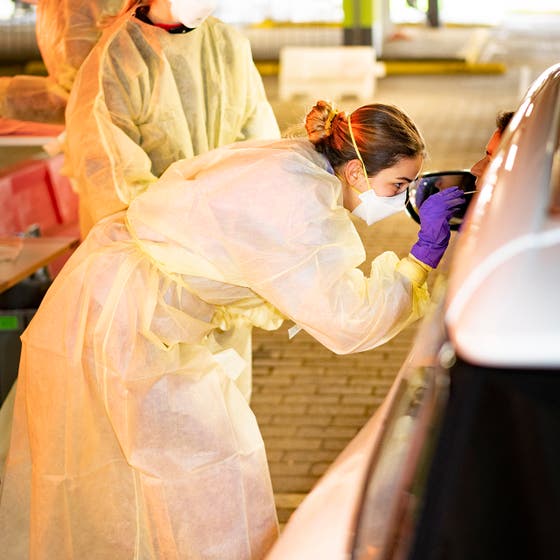May 15: Detecting contacts COVID-19 patient only makes sense with faster testing

Detecting contacts of people infected with the new corona virus (SARS-CoV-2) makes no sense if there is too much lag time between infection and testing. Research at UMC Utrecht shows that the lag time currently is too long. Therefore, microbiologist Marc Bonten argues that everyone should be able to easily access a test location.
Testing and contact tracing are important instruments to make the current measures in the Netherlands more flexible. Professor of epidemiology Mirjam Kretzschmar and Marc Bonten conducted research into the main factors required to make this contact tracing successful. The conclusion is clear. Marc: “The faster someone with symptoms is quarantined, in combination with the quick detection of the people that this person has had contact with, the fewer other people will be infected. According to our model, even more than 80 percent of further contamination can be prevented.”
Skip the doctor
Quarantining quickly is therefore crucial. The government is now setting up a process in which it is intended that from June onwards anyone with cold symptoms can be tested as soon as possible. Part of that process is that you must first visit your doctor. Marc advises to skip that step. “The optimal (fastest) scenario is that everyone with symptoms can be tested on the same day. How do you reduce the time between getting complaints and having a test result? Very simple: take away doctors and whatever else is in between. If someone with complaints can report directly to a test location, you will have the fastest result. This requires a major change from current practice, where it is always a doctor who decides whether or not to test.” The second step after a quick test result is quickly finding contacts. Marc: "Our research shows that an app that can register contacts can help."
Mathematical model
For the study, the researchers used a mathematical model developed by Mirjam Kretzschmar and het team. This model describes time delays between time of infection, onset of symptoms, diagnosis and isolation. The model also describes the identification of close contacts, for example family members, and casual contacts with various delays and coverages. "We also calculated different scenarios for isolating COVID-19 infected individuals and tracing and quarantining all people they have interacted with." Those different scenarios show that testing and detecting contacts can be very effective, but then it has to be a lot faster than what now has been proposed.”
Publication
Kretzschmar M, Rozhnova G, Bootsma M, Boven M van, Wijgert J van de, Bonten M. Time is of the essence: impact of delays on effectiveness of contact tracing for COVID-19. Lancet Global Health 2020, accepted for publication
